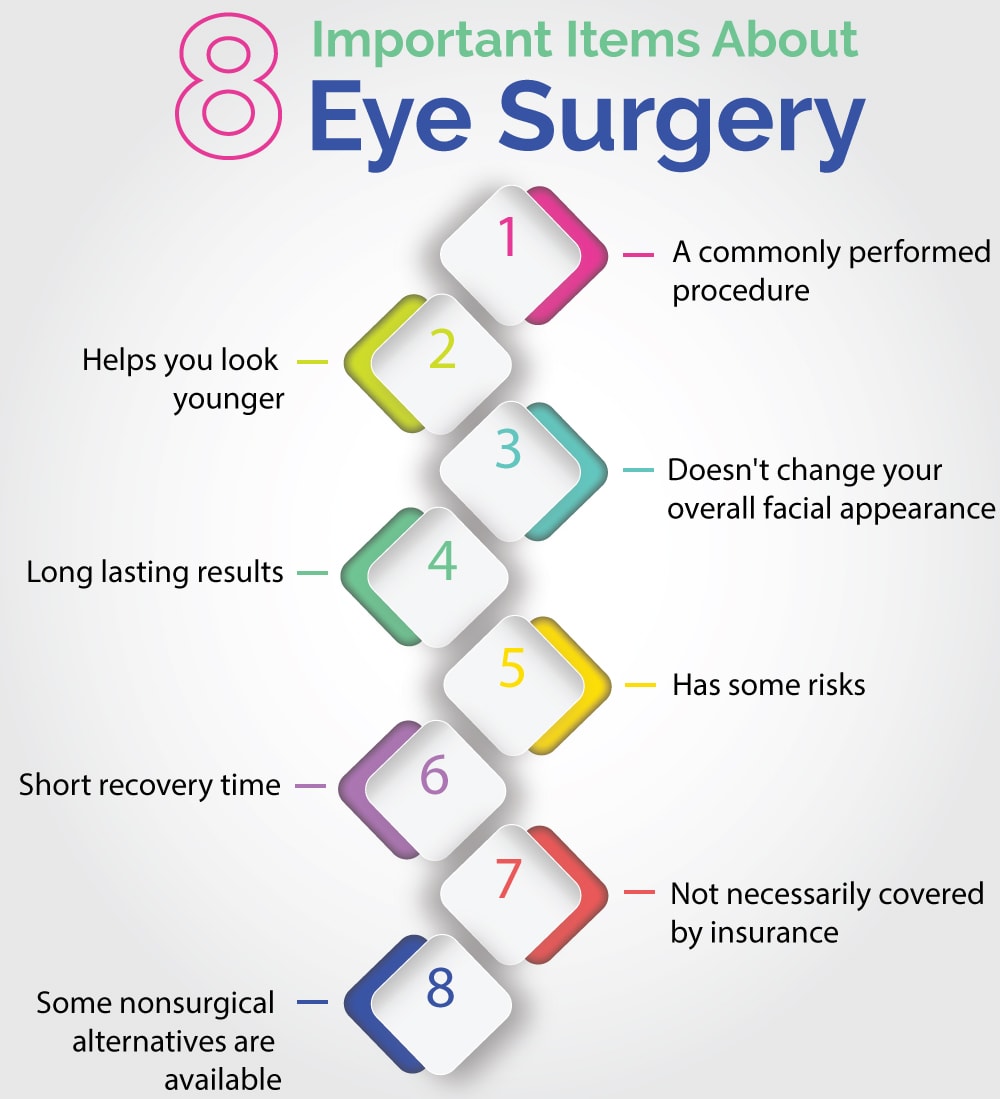
One of the most popular plastic surgery procedures currently performed is blepharoplasty. This procedure is better known as eyelid surgery and it is the removal of excess muscle, fat and skin in the upper and lower eyelids. Not familiar with this surgery? Take a look below at what you need to know about eyelid surgery.
Eyelid Surgery Facts
Check out these eye-catching facts about eyelid surgery:
How Eyelid Surgery is Performed
Here are some steps you need to know about how eyelid surgery is performed:
Adequate preparations are necessary to ensure a successful blepharoplasty procedure. Prior to scheduling the surgery, it is important that you see a plastic surgeon and an eye specialist (ophthalmologist) or a plastic surgeon that specializes in eye surgeries (oculoplastic surgeon) to talk about your medical history and the risks and rewards of the procedure. During a consultation, your surgeon will inquire about any procedure you've had in the past as well as past or current medical conditions like dry eyes, glaucoma, allergies, circulatory problems, thyroid problems and diabetes.
Before the procedure, a physical examination will be performed. The cosmetic surgeon will test your tear production and measure parts of your eyelids.
A vision examination will be performed and this includes an examination of your eyes and a test of your vision (including your peripheral vision). Eyelid photography (the photography of the eyes from different angles) will be performed to help in the planning of a blepharoplasty procedure. These examination steps are performed to assess the immediate and long-term effects of blepharoplasty on your eyes.
A blepharoplasty procedure entails the surgeon cutting along the creases of the eyelids to trim sagging skin and muscle and to remove excess fat. After the excess tissue is removed, the skin is joined back together with dissolvable stitches.
The results from eyelid surgery are usually long-lasting as bags and puffy areas on the lower lids normally don’t reappear after surgery. Any droopiness that might reappear is normally due to sagging brows. Doctors can utilize a brow lift or Botox to correct this issue. Also, staying out the sun and not smoking also helps keep the results looking youthful.
Eyelid Surgery Risks and Recovery
As with any surgical procedure, there are risks involved with eyelid surgery. A skilled surgeon can normally make the procedure a very safe experience. The risks from the surgery normally include dry eyes and trouble closing the eyes. Be sure and do your research to find a board-certified surgeon to perform the surgery.
The recovery time after eyelid surgery is normally a few weeks after the surgery. The first couple of weeks after surgery will see some pain, swelling and bruising. All of these conditions should subside in a few weeks. Most patients can return to work a couple of weeks after the surgery.
Check with a Board-Certified Doctor
As mentioned above, most insurance plans don’t cover cosmetic surgeries such as eyelid surgery. However, showing that the surgery is medically necessary might be what you need to get your insurance company to pay for the procedure. The cost for the surgery includes anesthesia fees, facility fees and any tests associated with the surgery. Check with your board-certified doctor of choice to see if the eyelid surgery you desire is deemed to be medical necessary.
If the surgery is not medically necessary, you can always ask your doctor about nonsurgical alternatives including fractional eyelift and Botox. While they don’t remove excess skin, they do improve the look of sagging eyelids by tightening and/or lifting them.